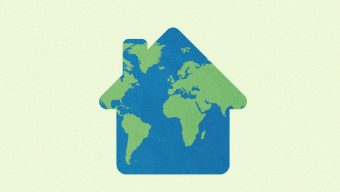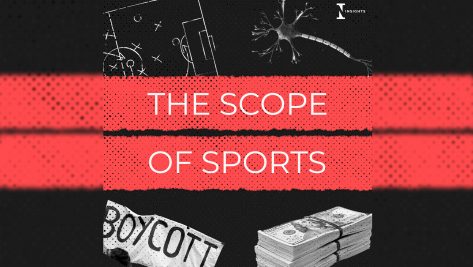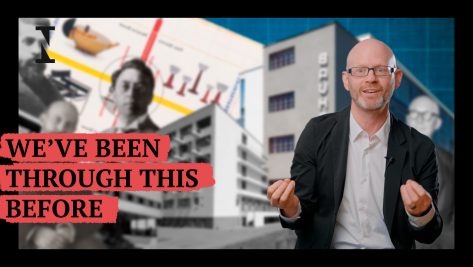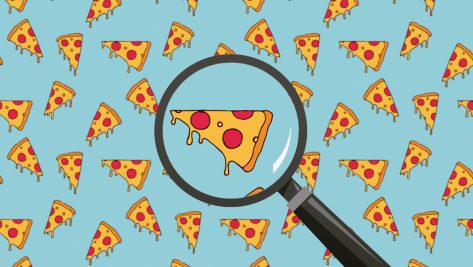María Eizaguirre: Surveys have shown that most executives consider innovation an extremely important part of their growth strategies, yet they remain dissatisfied with their organizations’ performance in this area. How do you explain this?
Scott Anthony: The foundation of innovation is customer centricity—the company’s capacity to place the customer at the center of everything it does. Innovation should always start from there. We continually observe that organizations overly focus on demographic research and consumer behavior analysis. As a result, the data they obtain show correlations but cannot explain what lies behind the decisions consumers make. That leads to dissatisfaction because it seems like they are “shooting in the dark”. What you really need is a causality model that explains why A causes B, which would allow you to spot opportunities and threats and chart a clear path towards innovation.
María Eizaguirre: So it’s a matter of discovering the customer’s real motivations.
Scott Anthony: Exactly. This idea has been around for a long time. Back in the 1960s, Theodore Levitt identified a fundamental mistake that many companies made: defining their business in terms of categories. That’s not how customers think—they’re focused on whatever problem they need to solve. Companies should therefore turn their attention to the jobs that their customers need done. The jobs-to-be-done (JTBD) framework starts with the idea of putting customers and the problems they want to solve at the center of the innovation equation.
The foundation of innovation is customer centricity—the company’s capacity to place the customer at the center of everything it does.
María Eizaguirre: How can companies decide which JTBDs deserve their attention and which ones do not?
Scott Anthony: Jobs should be prioritized if they satisfy three criteria. First, importance. A job is important if there will be significant consequences if the customer is unable to find a satisfactory solution. Second, dissatisfaction. If the existing solutions yield unsatisfactory outcomes, there is room for new ones. And third, high value. A high-value job is something that many customers need done frequently or that a few customers would be willing to pay a lot to get done. The sum of these three criteria tells you whether or not a job should be prioritized.
María Eizaguirre: You seem fully convinced of the effectiveness of this approach.
Scott Anthony: Yes, for several reasons. It goes deep into the consumer’s mind and tries to understand what drives them to action. It gets at the real motivation behind the need and helps us understand why people make decisions, taking functional, social, and emotional factors into account. Moreover, this approach helps organizations become more aware of their competition, especially outside the context of their category, which opens up the possibility of cross-category solutions. Bear in mind that people’s basic problems don’t change very much, so when you discover a deeply held problem that is not well solved, the path towards innovation starts to come into focus. Of course, my conviction also comes from seeing many companies successfully drive innovation-led growth by embracing jobs-to-be-done thinking!
Cultural change is never easy. In order to overcome barriers to innovation, first you have to determine what behavior you want to encourage.
María Eizaguirre: Can you offer any advice on discovering JTBDs?
Scott Anthony: We think of four “C” words: Context, circumstances, compensatory behaviors, and constraints. It is critical to venture out into the market and be in context with customers. Observation-based study methods that get to the root of people’s motivations help to discover unmet needs and devise compelling solutions. It is also important to understand different circumstances, since the notion of quality depends on them: what is acceptable in some cases may not be in others. Compensatory behaviors, when people do the ‘wrong thing” with a product or service, are a sign of dissatisfaction: something has been left undone. If you are on the lookout for this type of behavior, you can detect opportunities for improvement. Finally, it is important to identify the constraints, or barriers that prevent customers from getting jobs done. After all, a time-tested path to innovation is to make it simpler and easier for people to address frustrating problems.
María Eizaguirre: Let’s talk about constraints and barriers. Many organizations run into internal constraints or barriers that diminish their ability to innovate. What can they do to unlock their internal potential?
Scott Anthony: Cultural change is never easy. In order to overcome barriers to innovation, first you have to determine what behavior you want to encourage and figure out what is blocking it. Then you can introduce behavior enablers, artifacts, and nudges to encourage the adoption of the behavior. With these tools—known by the acronym BEANs—you can break down obstacles to creativity and innovation and foster an internal culture of customer centricity. Behavior enablers are anything that directly encourages and favors change: coaching, applications, rituals, etc. Nudges are things that encourage the desired behavior indirectly: office design, gamification, storytelling—anything that prompts people to start doing something naturally. Artifacts connect the other two elements and support the behavioral change: professional awards, objects to display on your desk, screensavers that remind you of expected behaviors, etc. If you can combine these three components with BEANs such as Tata’s Dare to Try prize (which encourages risk-taking), Adobe’s Kickbox program (which encourages experimentation), or Amazon’s Empty Seat ritual (which encourages customer-centricity) you can unlock creativity.
© IE Insights.











